Wind Used

Can wind turbines be used in residential areas ?
The use of wind turbines in residential areas is possible and offers numerous benefits, including reduced dependence on fossil fuels and increased energy independence. However, there are challenges such as zoning laws, noise levels, and aesthetic concerns that must be considered. Economic factors like upfront costs and maintenance expenses also play a role. To successfully implement wind turbines in residential settings, homeowners should assess their site's suitability, work with professionals to plan the system, engage with the community, choose a reputable installer, and monitor the turbine's performance regularly.

Can permanent magnet motors be used in renewable energy systems such as wind turbines ?
Permanent magnet motors are used in renewable energy systems, including wind turbines, due to their high efficiency and reliability. They offer advantages such as high efficiency, low maintenance, good torque characteristics, size and weight benefits, and adaptability. However, challenges and considerations include cost, thermal management, and dependence on rare earth metals. Overall, permanent magnet motors are a popular choice for efficient and reliable energy conversion in wind power applications.
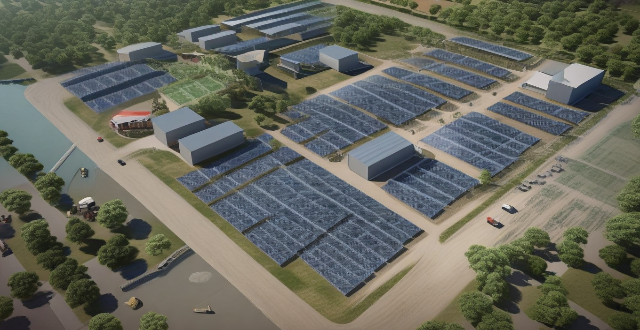
How can wind energy be stored for later use ?
Storing wind energy is crucial for integrating renewable energy into power grids. Wind turbines produce electricity intermittently based on weather conditions, unlike traditional power plants that can adjust output on demand. Several methods exist to store wind energy effectively, including battery storage systems, pumped hydro storage, compressed air energy storage (CAES), chemical batteries, flow batteries, thermal storage, and flywheels. When selecting a storage method, factors such as capacity, duration, cost, efficiency, environmental impact, and geographic suitability must be considered. As technology advances and costs decrease, we can expect more innovative solutions for efficient wind energy storage.

How does wind energy compare to solar energy ?
Wind energy and solar energy are both renewable sources of energy that have gained popularity in recent years. Wind turbines can generate electricity with high efficiency and low maintenance cost, while solar panels have a low initial cost and long lifespan. However, wind turbines can create noise pollution and have limited availability, while solar panels rely on sunlight and require a large amount of land. Both sources have their advantages and disadvantages, making them suitable for different applications.

What is offshore wind energy and how does it work ?
Offshore wind energy is a renewable source that generates electricity from wind turbines installed in bodies of water. It offers advantages such as higher wind speeds and less impact on terrestrial environments but faces challenges including high installation costs and environmental considerations. The process involves converting wind power into electrical energy, which is then transmitted to the mainland grid.

How much does it cost to install a wind turbine ?
Installing a wind turbine can be a significant investment, and the cost varies depending on several factors such as the size of the turbine, location, and installation complexity. Here is a detailed breakdown of the costs involved in installing a wind turbine: 1. **Turbine Cost**: Small Turbines typically used for residential purposes can cost anywhere between $30,000 to $50,000. Large Turbines used for commercial purposes can cost upwards of $1 million. 2. **Site Assessment and Permitting**: Site Assessment involves evaluating the site for wind speed, topography, and other factors that affect the performance of the turbine. The cost can range from $5,000 to $15,000. Depending on the local regulations, obtaining necessary permits can cost between $5,000 to $20,000. 3. **Foundation and Construction**: The foundation needs to be strong enough to support the turbine, and the cost can vary between $10,000 to $30,000. The actual installation of the turbine can cost between $6,000 to $12,000. 4. **Electrical Connections and Grid Interconnection**: This includes setting up the wiring and electrical connections needed to connect the turbine to your home or business. The cost can range from $8,000 to $15,000. If you plan to sell excess electricity back to the grid, you will need to set up a grid interconnection. This can cost between $5,000 to $10,000. 5. **Maintenance and Operational Costs**: Regular maintenance is required to ensure the turbine operates efficiently and safely. Annual maintenance costs can range from $1,000 to $3,000. This includes costs associated with operating the turbine, such as insurance and taxes. The cost can vary depending on the location and size of the turbine. 6. **Total Cost**: The total cost of installing a wind turbine can range from $75,000 to $1.5 million or more, depending on the size and complexity of the project. It is important to consider these costs before deciding to install a wind turbine. In conclusion, installing a wind turbine can be a costly endeavor, but it can also provide long-term benefits in terms of energy savings and reducing carbon footprint. It is essential to carefully evaluate the costs and benefits before making a decision.

What is wind energy and how does it work ?
Wind energy is a renewable and sustainable source of electricity that harnesses the power of wind through the use of wind turbines. It offers several advantages, including being environmentally friendly, cost-effective, and job-creating. However, challenges such as intermittency, site selection, visual impact, and wildlife impacts must be considered. Despite these challenges, advancements in technology and planning practices are making wind energy an increasingly viable option for meeting our energy needs.
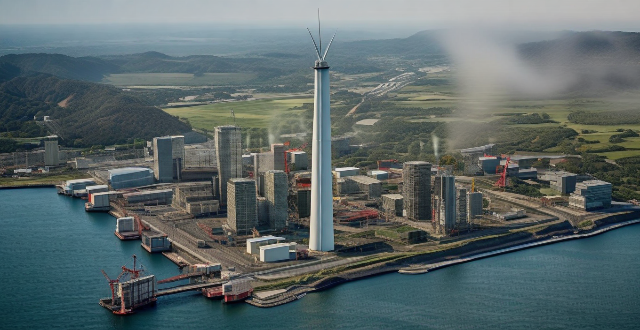
What countries are leading in wind energy production ?
The leading countries in wind energy production are China, the United States, Germany, India, and Spain. China has the largest installed capacity with 282 GW as of 2021, followed by the US with 119 GW, Germany with 60 GW, India with 38 GW, and Spain with 26 GW. These countries have seen rapid growth and innovation in their wind energy sectors, with key regions and states contributing significantly to their overall output. Their efforts demonstrate a commitment to reducing carbon emissions and transitioning towards sustainable energy sources.

How does wind energy affect the environment ?
Wind energy is a renewable source of power that has become increasingly popular as an alternative to fossil fuels. However, like any form of energy production, it does have some environmental impacts. The positive effects of wind energy on the environment include a reduction in greenhouse gas emissions, conservation of natural resources such as water and no need for fuel. Wind farms can coexist with agricultural activities and modern turbine designs can help minimize impacts on local wildlife. However, there are also potential negative effects on the environment. These include visual and noise pollution, as well as potential impacts on wildlife such as bird and bat collisions and habitat disruption. The presence of large structures like wind turbines can also alter local wind patterns and potentially affect microclimates. Overall, while wind energy offers significant benefits in terms of reducing greenhouse gas emissions and conserving natural resources, it is not without its challenges regarding visual and noise pollution, as well as potential impacts on wildlife. Careful planning and technological advancements can help mitigate these negative effects, making wind energy an increasingly viable option for a sustainable future.

How can wind energy contribute to a sustainable future ?
Wind energy is a renewable and sustainable source of power that can significantly contribute to a more sustainable future. It offers several benefits including reducing carbon emissions, stimulating economic growth, enhancing energy security, driving technological innovation, compatible land use, community engagement, scalability, improving health impacts, and promoting education and awareness. By incorporating wind energy into our energy mix, we can create a cleaner, healthier, and more sustainable environment for future generations.

What are the current challenges in scaling up wind energy production globally ?
The article discusses the various challenges that need to be addressed in order to scale up wind energy production globally. These include infrastructure development, technological barriers, environmental impact, economic factors, regulatory issues, and social acceptance. Overcoming these obstacles requires collaborative efforts from all stakeholders involved in the wind energy sector.

Is wind energy a viable option for developing countries ?
Is wind energy a viable option for developing countries? Yes, wind energy offers numerous benefits such as cost-effectiveness, sustainability, job creation, and improved energy security. However, several challenges must be addressed including infrastructure needs, financing barriers, policy development, and environmental considerations. With careful planning and strategic investments, wind energy can indeed be a viable option for developing countries looking to build a sustainable future.

How efficient is wind energy compared to other renewable sources ?
The efficiency of wind energy is influenced by factors such as capacity factor, technological advancements, and site specificity. Compared to other renewable sources like solar, hydropower, geothermal, biomass, and tidal/wave energy, wind energy has a relatively high capacity factor ranging from 35% to 45%. Technological improvements have increased the efficiency of wind turbines over the years, making them more productive. However, the efficiency of wind farms is highly dependent on the location, with optimal sites achieving higher efficiency rates. In conclusion, wind energy compares favorably to other renewable sources in terms of efficiency, but the choice between different renewable energies often depends on local conditions, economic factors, and technological advancements.
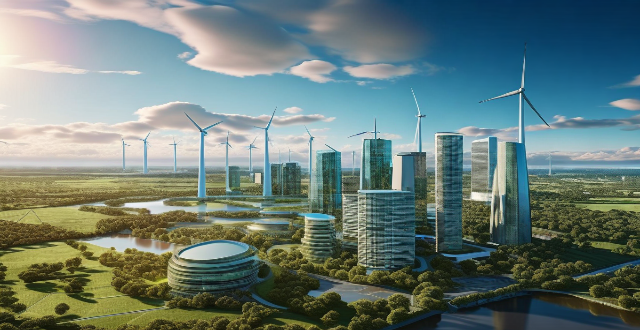
What is wind energy and how effective is it compared to other renewable sources ?
This article provides an overview of wind energy, discussing its definition, effectiveness compared to other renewable sources, cost-effectiveness, environmental impact, scalability, and availability. It highlights the benefits of wind energy as a clean and sustainable source of electricity that can be produced at any scale and in many parts of the world.
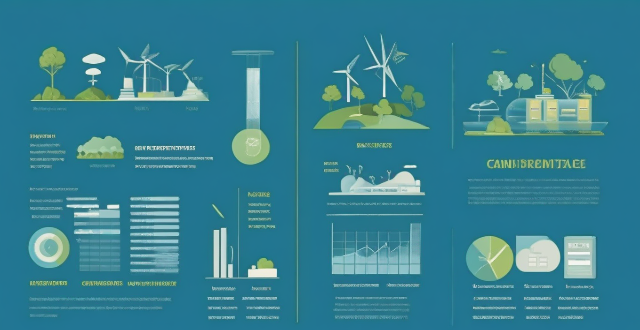
How do I invest in wind energy projects ?
Investing in wind energy projects can be a lucrative opportunity, but requires careful consideration and planning. To ensure success, it is crucial to understand the industry, research potential projects, evaluate their feasibility and financial viability, conduct due diligence, choose a suitable investment strategy, secure financing, form partnerships, negotiate terms, monitor progress, and diversify your portfolio. By following these steps, you can make informed investment decisions and contribute to a sustainable future for generations to come.

How does hydropower compare to other forms of alternative energy ?
Hydropower, a form of renewable energy that uses water flow or fall to generate electricity, is compared with other alternative energies like solar, wind, geothermal, and biomass across various aspects: 1. **Cost-Effectiveness**: Hydropower has high setup costs but low operational expenses, while solar and wind require significant upfront investment for installation but have lower running costs. Geothermal can be expensive initially due to drilling and exploration, and biomass costs vary based on the type and conversion technology used. 2. **Reliability and Consistency**: Hydropower offers consistent power generation as long as water flow is maintained. Solar power's reliability depends on sunlight, wind power on wind patterns, geothermal power provides consistent power once established, and biomass needs a steady supply of material for consistency. 3. **Environmental Impact**: Hydropower can impact habitats and water temperature but produces no direct emissions. Solar power has a relatively low environmental impact during operation but considers the manufacturing process. Wind power is generally environmentally friendly, geothermal power releases fewer pollutants than fossil fuels, and biomass burning releases CO2 but is carbon-neutral. 4. **Energy Storage and Grid Integration**: Hydropower offers excellent energy storage capabilities. Solar and wind powers require energy storage solutions. Geothermal power doesn't typically require energy storage, while biomass can be stored and used as needed. 5. **Scalability and Deployment Speed**: Large-scale hydropower projects can take many years to build, whereas small-scale or run-of-river systems can be deployed faster. Solar power can scale from small residential systems to large farms, and wind farms can be built relatively quickly. Geothermal power's scalability depends on the resource available, and deployment can be slow due to requirements. Biomass ranges from small community digesters to larger power plants, with scalability being moderate.
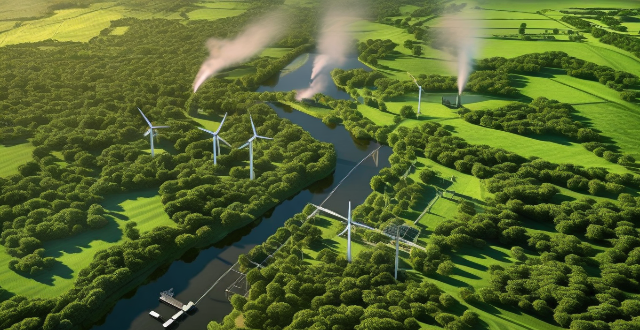
What are the most common types of renewable energy sources ?
Renewable energy sources are naturally replenished and provide a sustainable way to generate power without depleting the Earth's natural resources or contributing to climate change. Solar energy is harnessed through photovoltaic systems, solar water heaters, and concentrating solar power. Wind energy is captured by onshore and offshore wind turbines. Hydropower is generated through dam-based and run-of-river systems. Geothermal energy is tapped into via dry steam, flash steam, and binary cycle power plants. Bioenergy includes biomass combustion, anaerobic digestion, and biofuels. These sources offer clean alternatives to fossil fuels and play a crucial role in reducing greenhouse gas emissions.

What are some innovative ways that people are using to generate their own alternative energy at home ?
The provided text discusses innovative ways to generate alternative energy at home. It mentions various methods such as solar power (solar panels, solar water heaters, solar chargers), wind power (home wind turbines, vertical axis wind turbines), hydropower (micro hydro systems, rainwater harvesting), geothermal energy (ground source heat pumps, geothermal water heaters), and biomass energy (wood burning stoves, biogas digesters). The conclusion highlights the potential of these methods in reducing a household's carbon footprint and contributing to a sustainable future.

What are the alternatives to fossil fuels for energy production ?
The article discusses various alternatives to fossil fuels for energy production, including solar energy, wind energy, hydroelectric power, geothermal energy, biomass energy, and nuclear energy. It explains the working principles of each alternative and their advantages and disadvantages. The main advantage of these alternatives is that they produce clean energy with minimal greenhouse gas emissions, reducing the impact on the environment and climate change. However, some of them require significant investment and infrastructure development, while others have safety concerns or limited availability. Overall, the article highlights the potential of these alternatives in providing sustainable and reliable sources of energy for the future.

What materials are used to make durable iPhone cases ?
Durable iPhone cases are designed to protect your device from drops, scratches, and other types of damage. The materials used to make these cases play a crucial role in determining their durability and effectiveness. In this article, we will explore the different materials used to make durable iPhone cases and discuss their benefits and drawbacks.

What are the most common materials used in the production of protective clothing ?
Protective clothing is designed to safeguard individuals from hazardous environments or conditions. The materials used for such garments play a crucial role in providing the necessary protection while ensuring comfort and functionality. In this article, we will explore the most common materials used in the production of protective clothing: Polyester, Cotton, Nylon, Neoprene, and Gore-Tex.

What currencies can be used for Cross-Border Payment ?
The currencies used for cross-border payments vary widely depending on numerous factors, including economic strength, political stability, and market acceptance. Major world currencies like the US Dollar, Euro, British Pound Sterling, and Japanese Yen are commonly used due to their global acceptance and role in international trade and financial markets. Other currencies such as the Chinese Yuan/Renminbi, Canadian Dollar, and Australian Dollar also play significant roles in cross-border payments, particularly in commodities trade and regional economies. Digital currencies, including Bitcoin and stablecoins, are increasingly being used for cross-border payments, offering decentralized transactions and the benefits of blockchain technology. Factors influencing currency choice include regulatory environment, cost considerations, market fluctuations, and business agreements.

What are the basic techniques used in Chinese cooking ?
Chinese cuisine is known for its diverse flavors and cooking techniques. Here are some of the basic techniques used in Chinese cooking: 1. Stir-frying involves quickly frying small pieces of food in a wok or frying pan over high heat. The key to successful stir-frying is to use hot oil, fresh ingredients, and constant motion to prevent burning. 2. Steaming involves placing food in a steamer basket over boiling water and allowing it to cook through steam. This method is often used for dumplings, buns, fish, and vegetables. 3. Braising is a slow-cooking method that involves simmering meat or vegetables in liquid until they become tender and flavorful. This technique is often used for stews, soups, and braises. 4. Deep-frying involves submerging food in hot oil until it becomes crispy and golden brown. This technique is often used for fried rice, spring rolls, and tempura dishes. 5. Roasting involves cooking food in an oven at high temperatures until it becomes caramelized and tender. This technique is often used for roasted meats, vegetables, and baked goods like mooncakes and egg tarts.

What are the advantages and disadvantages of wind energy ?
The given text is about the advantages and disadvantages of wind energy. The advantages include being renewable and sustainable, environmentally friendly, cost-effective, job creation, and energy independence. On the other hand, the disadvantages are its intermittent nature, land use concerns, noise and visual impact, wildlife impact, and high initial cost.
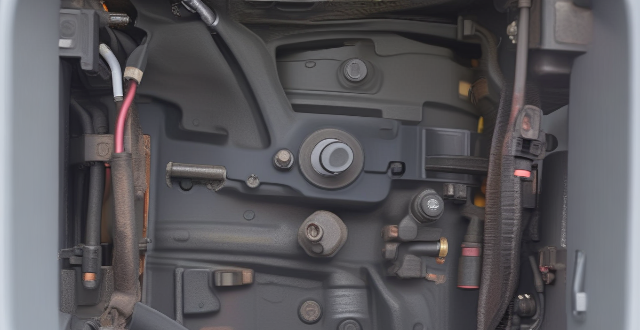
Can an electronic speed controller be used in a car engine ?
The question of whether an electronic speed controller (ESC) can be used in a car engine depends on the type of engine. In traditional internal combustion engines (ICE), which use gasoline or diesel as fuel, an ESC cannot be used because these engines rely on mechanical systems for speed control. However, in electric cars, which use electric motors as their primary source of propulsion, an ESC is essential for controlling the speed of the motor and protecting it from damage. Therefore, while an ESC cannot be used in ICE vehicles, it plays a crucial role in electric vehicles.